 “Why do fossil fuels continue to provide most of our energy? The reason is simple. Fossil fuels are the cheapest energy.” – James Hansen, leading climate scientist and former director of NASA Goddard Institute for Space Studies.
“Why do fossil fuels continue to provide most of our energy? The reason is simple. Fossil fuels are the cheapest energy.” – James Hansen, leading climate scientist and former director of NASA Goddard Institute for Space Studies.
This piece was inspired by an article by Tim Harford for the Financial Times:
“A carbon tax is the nudge the world needs.”
Tim gives his thoughts on a Green New Deal, as advocated by Alexandria Ocasio-Cortez in the US, and also Ed Miliband, the UK Labour Party, and Caroline Lucas of the Green Party.
So what is a Green New Deal? “An emergency of this magnitude requires large-scale government intervention to kickstart industries, to direct investment and to boost research and development in the green technologies of the future.” (Jeremy Corbyn)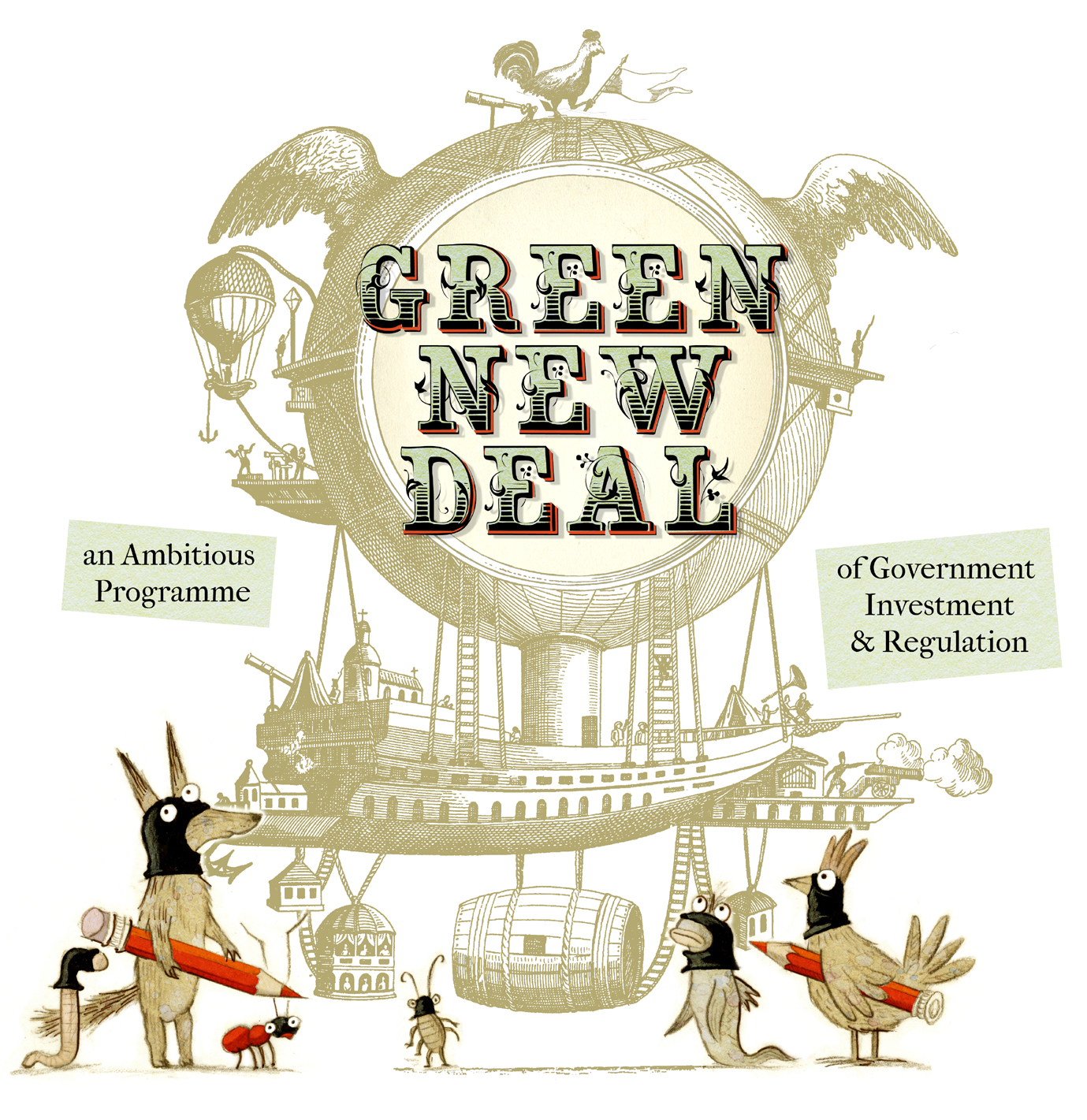 It’s an ambitious programme of government investment and regulation. It’s a huge centrally planned response to climate change: the government sets regulations on industry and decides who to subsidise through general taxation. The idea is to tackle everything: social justice, equity, biodiversity loss, CO2 emissions; to reinvigorate left-behind communities, create new jobs and guarantee everyone has them.
It’s an ambitious programme of government investment and regulation. It’s a huge centrally planned response to climate change: the government sets regulations on industry and decides who to subsidise through general taxation. The idea is to tackle everything: social justice, equity, biodiversity loss, CO2 emissions; to reinvigorate left-behind communities, create new jobs and guarantee everyone has them.
But without a clear price on carbon, signals to industry may be mixed. Do you win the lottery of government support? The government may not be the best judge of which industries to support. It may be vulnerable to corruption. Good causes may not be supported due to lack of knowledge.
A Green New Deal may have approval from the ‘left’ as action is seen to be taken, but increasing government control & spending may be unpopular on the ‘right’. Support will be split on partisan lines. And where will the money come from? There doesn’t seem to be a clear mechanism for real change in everyone’s behaviour.
And what would be an effective mechanism?
Tim Harford says: “Our modern economy reflects countless choices, made by billions of people all over the world. A broad-based carbon price influences them all. Nothing else can.”
Now – a carbon price cannot be the only measure for tackling climate change and biodiversity loss, our twin existential threats – but it could be really effective at changing all of our energy use. And it NEVER EVER gets talked about in the media or by politicians. (except for Layla Moran!)
So I thought I would have a look at different methods of carbon pricing – does the way you implement a carbon tax have an effect on its outcomes?
There are a lot of different iterations of carbon pricing, so I’ve whittled down the options to these: (and my apologies if I’ve left out your favourite…)
- Cap & Trade (which is the status quo right now)
- Carbon Tax & Government spends revenue
- Carbon tax & rebate through income tax
- Carbon Fee & Dividend
So here we go!
Status Quo: Cap & Trade
 What happens here is the Government sets a limit on Carbon to be emitted – the ‘CAP’. CO2-intensive industries bid for permits, and so the CO2 price is set by the market. This is our present system in the EU Emissions Trading Scheme (ETS), with an additional UK Carbon Price Floor added. This has actually had a big effect, driving our energy mix away from coal and oil and towards gas, nuclear and renewables, which is a good thing. But there are failures in this system. One is that 58% of EU emissions come from sectors outside the EU ETS, such as transport, buildings, waste management and agriculture. So lots of industries are not included. Also not included is us, the general public – we are all fuel users, but we are unable to have any effect on this system. The price set on carbon at the moment is too low to have much meaningful effect. High fuel prices passed on to the public would be unacceptable without some sort of compensation plan.
What happens here is the Government sets a limit on Carbon to be emitted – the ‘CAP’. CO2-intensive industries bid for permits, and so the CO2 price is set by the market. This is our present system in the EU Emissions Trading Scheme (ETS), with an additional UK Carbon Price Floor added. This has actually had a big effect, driving our energy mix away from coal and oil and towards gas, nuclear and renewables, which is a good thing. But there are failures in this system. One is that 58% of EU emissions come from sectors outside the EU ETS, such as transport, buildings, waste management and agriculture. So lots of industries are not included. Also not included is us, the general public – we are all fuel users, but we are unable to have any effect on this system. The price set on carbon at the moment is too low to have much meaningful effect. High fuel prices passed on to the public would be unacceptable without some sort of compensation plan.
Carbon Tax & Government spends revenue 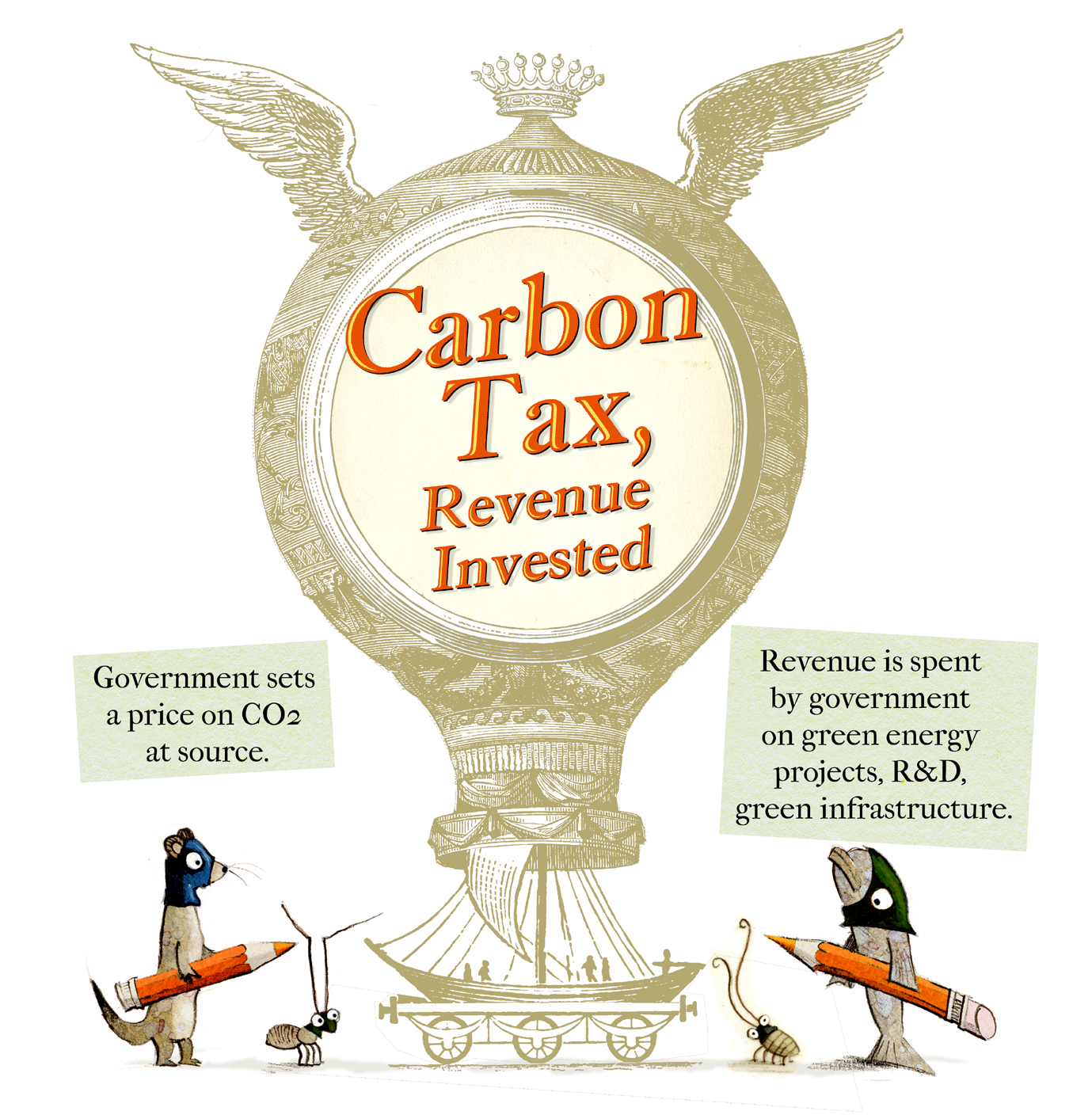 So now, rather than setting a limit on carbon to be emitted & letting the market price the carbon, the Government puts a direct tax on carbon, setting the price. If the price is high enough it drives a change away from carbon-intensive fuels, and makes clean energy comparatively much more affordable.
So now, rather than setting a limit on carbon to be emitted & letting the market price the carbon, the Government puts a direct tax on carbon, setting the price. If the price is high enough it drives a change away from carbon-intensive fuels, and makes clean energy comparatively much more affordable.
So now you have a price on carbon at source. What to do with the revenue?
In this model, the government spends the revenue on green energy projects and infrastructure, and any other projects they decide will help the battle against climate change.
But this approach brings higher prices to consumers without any compensation. It also does not involve or empower the public in any clearly visible way. Will the government make the best choices? We don’t know. Looking at the Gilets Jaunes protesters in France, imposing higher prices with no compensation looks extremely unpopular.
Carbon tax & rebate through income tax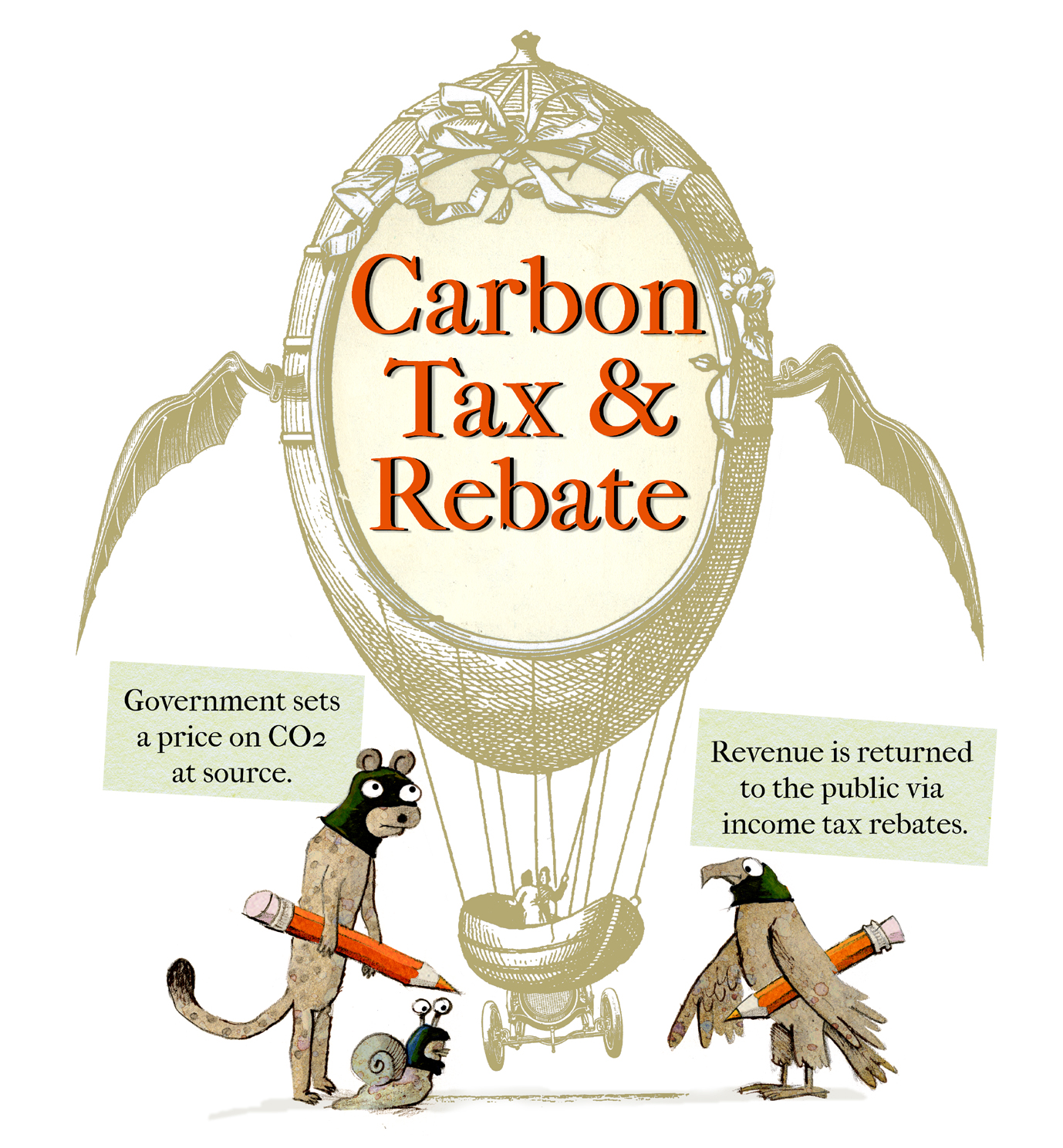 Here we have the same instrument to collect revenue – a fee on carbon at source. But now the revenue is returned to the public via the income tax system through tax rebates. (Some ideas are for a mix of this and the government allocating some of the revenue to clean energy projects, but to keep things simple I’m going to say all the revenue is being returned.) So our tax is revenue neutral, and people can see a benefit on their decreased tax bills.
Here we have the same instrument to collect revenue – a fee on carbon at source. But now the revenue is returned to the public via the income tax system through tax rebates. (Some ideas are for a mix of this and the government allocating some of the revenue to clean energy projects, but to keep things simple I’m going to say all the revenue is being returned.) So our tax is revenue neutral, and people can see a benefit on their decreased tax bills.
But there’s a fairness problem here: as far as I can tell, this form of compensation is regressive – higher earners get proportionally more tax compensation, so the poorest have higher fuel prices, less compensation, and are worse off. And what happens to those who don’t earn enough to pay tax or have fallen off the edges of the system? Also – how motivating is it to have less income tax? It seems to be less of a bad thing, rather than a positive symbol of climate action.
(Ok this could be called Carbon Tax & Lump Sum, but to make it sound more upbeat we’re calling it a fee rather than a tax.)
Again, the government sets a price on carbon at source. This price rises over time at a rate set by an independent body. The revenue is returned equally to the public through a weekly/monthly/annual lump sum, ie a ‘DIVIDEND’.
So what’s different here?
The lump sum system is progressive: it really benefits lower earners most. The richest (and largest users of CO2-intensive energy) benefit least. Anders Fremstad of Colorado State University and Mark Paul of Duke University calculate that taxing a tonne of CO2 at $49 would leave 59% of Americans worse off, including 75% of the bottom half, if the revenue were used to lower personal-income taxes. By contrast, recycling the receipts as lump-sum payments (Dividends) would leave 89% of the bottom half with an average net gain of $788.
Here’s a graph adapted from The Future of Carbon Pricing by Policy Exchange.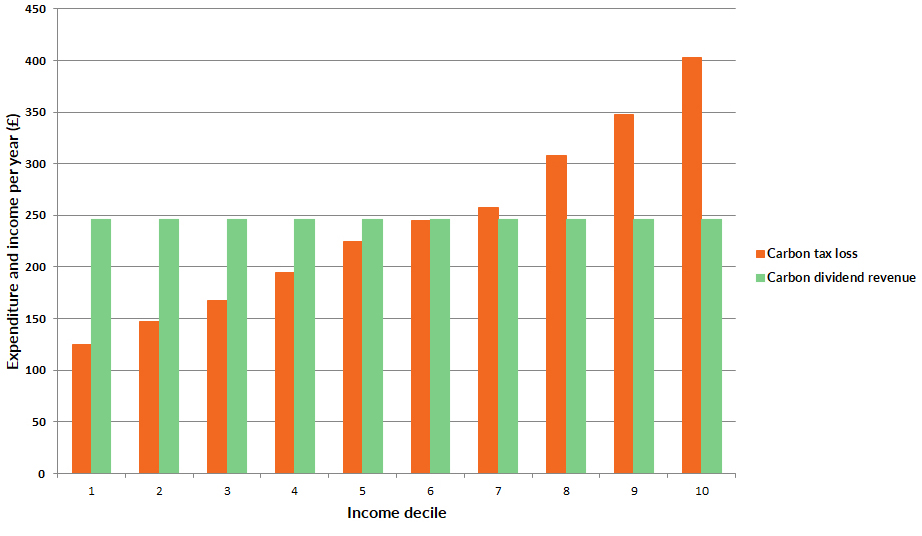 Dividend to each income group is in green. Increased fuel costs are in red. You can see the 6 lowest income groups all break even or are better off, with the poorest getting the biggest benefits. The wealthiest, highest fuel users, are the worst off.
Dividend to each income group is in green. Increased fuel costs are in red. You can see the 6 lowest income groups all break even or are better off, with the poorest getting the biggest benefits. The wealthiest, highest fuel users, are the worst off.
Compared to tax rebates, it’s demonstrably fair as all get an equal dividend.
It’s also possible to get dividends to the poorest most marginalised sections of society, by…. “Investigating inventive ways of paying the dividend to ensure that the most vulnerable receive it. Linking the dividend to national insurance numbers would be one a way to pay the dividend, but this may mean that the most vulnerable miss out. The Government should investigate whether new technology can be used to pay the dividend securely through a mobile app to ensure as many eligible people as possible receive it.” policyexchange.org.uk | 15Carbon Pricing
Through their dividend the public can support renewables in their choice of what energy to buy. The dividend is a visible sign of your purchasing power, and the public is trusted to choose how to spend it; wise choices bring a win-win virtuous spiral of energy choices. The dividend also gives voters an immediate interest in the fight against climate change –a lump sum arriving in your bank account is a very interesting event. All green energy sources benefit by becoming comparatively cheaper.
But another fantastic effect is that the Dividend, once people are used to it, is hard to withdraw by future governments (see what’s happened with UK Winter Fuel Payments) – and so acts as a pledge to industry that the carbon price will endure.
The equal dividend appeals to sense of fairness. Middle and lower earners break even or are better off.
To just measure up again these different ways of pricing Carbon, here’s is my Over-Elaborate & Subjective Table of Questions, to compare all the taxes. I’ve traffic-light colour-coded it: Green is what I see as GOOD outcomes, Yellow is maybe/unsure, Orange is POOR Outcomes (but remember, this is very subjective).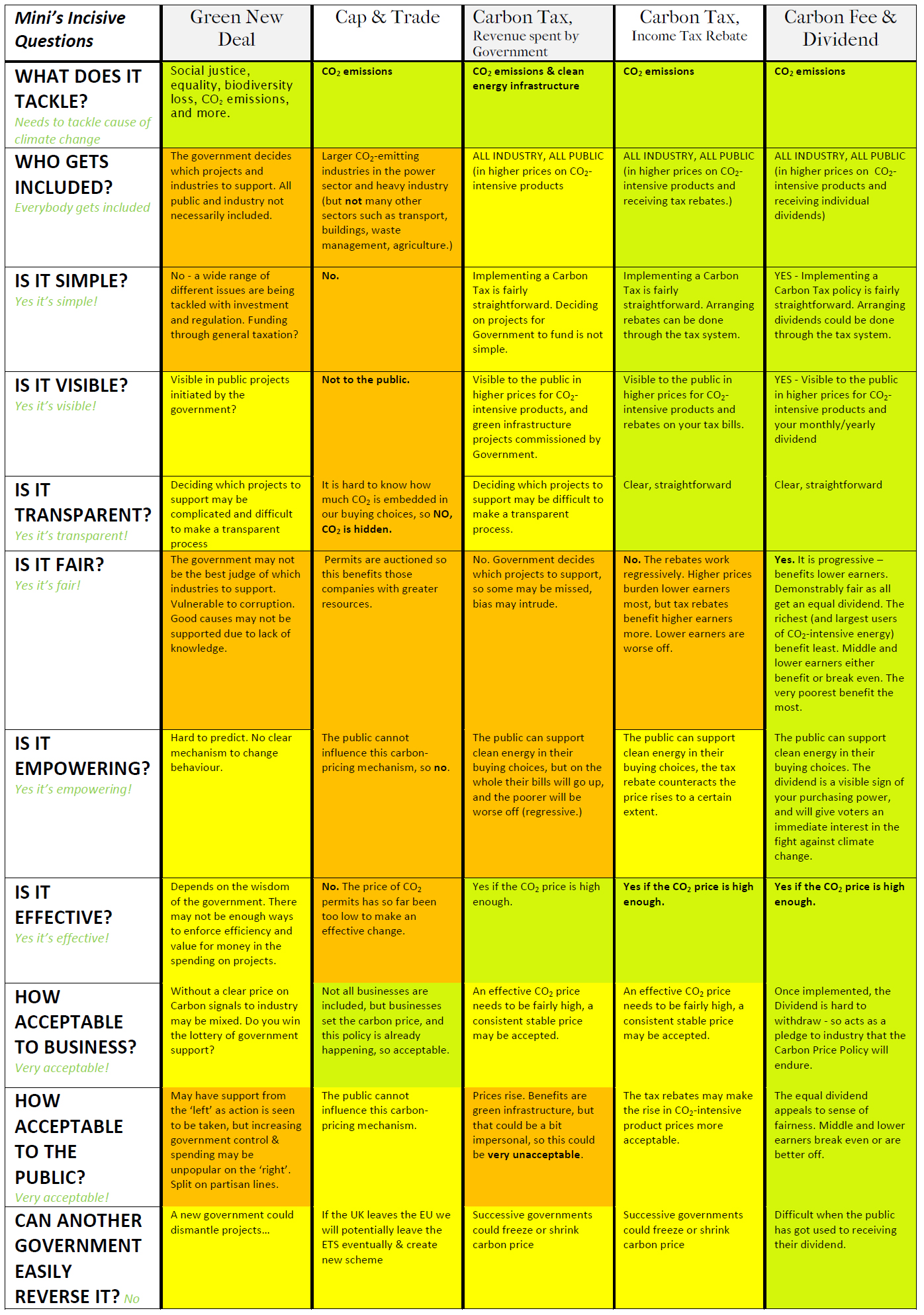
In the words of Tim Harford again: “We’re all involved….Our modern economy reflects countless choices, made by billions of people all over the world. A broad-based carbon price influences them all. Nothing else can.”
I’ve tried to look here at the different ways of implementing a broad-based carbon price. To me it looks like all ways of Carbon Pricing are not the same. Carbon is infused in all our lives and all our choices. We need to tackle climate change with a way that involves and empowers everybody, is fair and acceptable and progressive, and that also is able to set a high enough price for carbon to bring about change, in a way industry can see will not be overturned by a change of government. I think there is one clear policy winner here, one that does all those things.

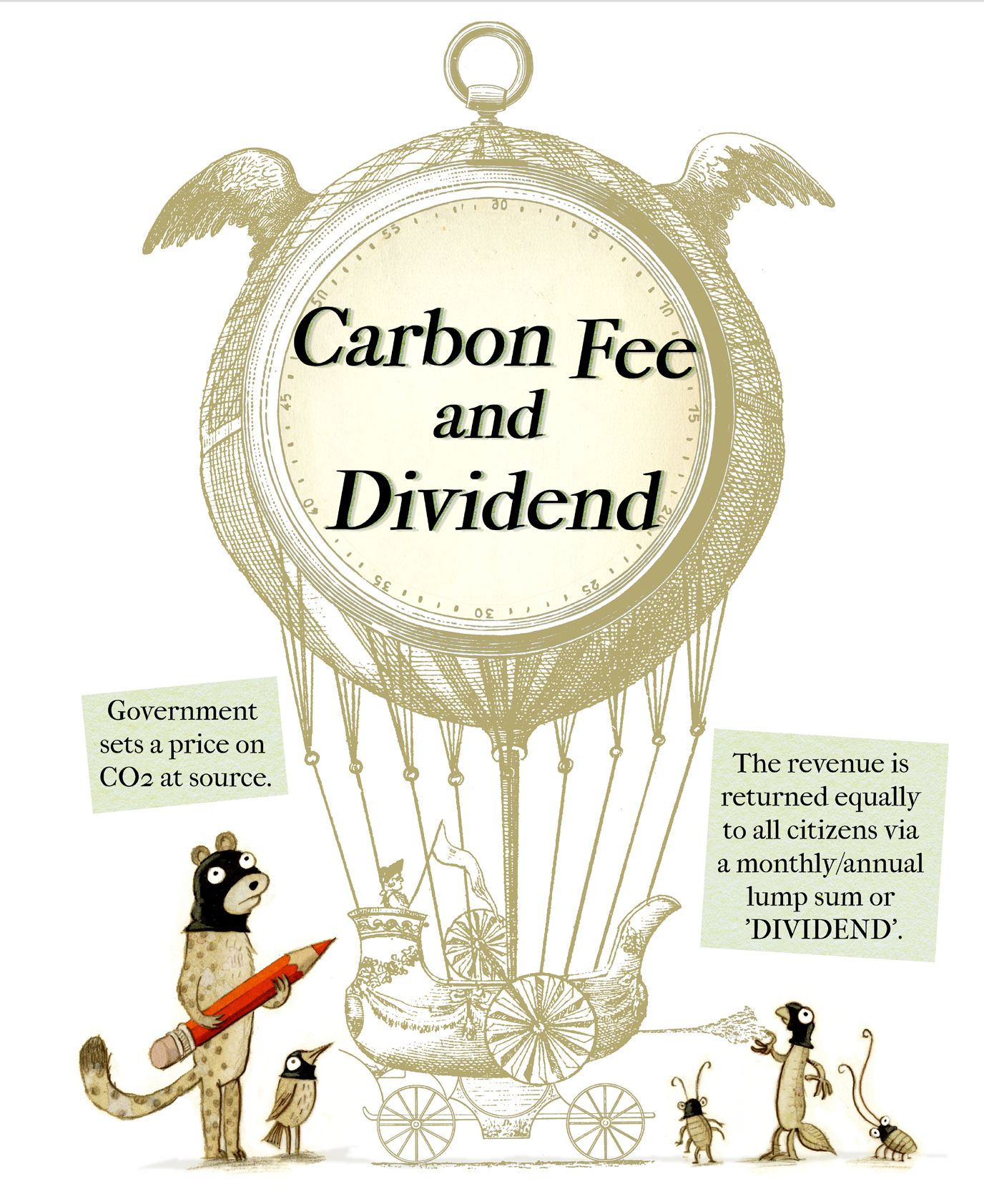
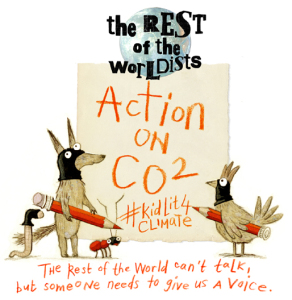
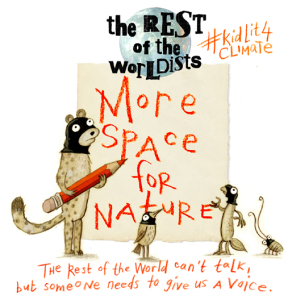

I think the carbon dividend and fee chimes with the zeitgeist and is v.interesting. I also think we should be considering moving towards sustainable local and independent energy supplies – maybe even on a street by street basis!
I heard something interesting the other day – which is new agey but quite powerful. Every boardroom should have a ‘children’s fire’ which is nurtured and supported by the board. Before voting on major decisions, board members should look into the fire and discuss if the decision does or doesn’t help their children, their grandchildren and all future generations. Then vote.
The tragedy is that carbon pricing is NEVER mentioned in the media so awareness seems VERY low! I love the idea of a ‘children’s fire’ – or maybe a few real children giving their opinion!